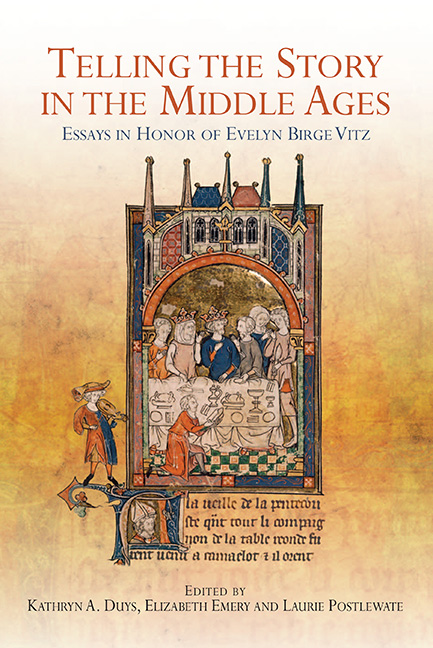Telling the Story of the Christ Child: Text and Image in Two Fourteenth-Century Manuscripts
Published online by Cambridge University Press: 17 June 2021
Summary
Medieval narrative, as Evelyn Birge Vitz has demonstrated repeatedly, is eminently performable. It could be recited by minstrels and jongleurs before groups large or small, or read aloud in intimate settings. Characters in romances sometimes enact the stories they read within it, and modern students can learn about medieval narrative through their own performances. Performance can also provide a fruitful perspective for thinking about religious narratives: in addition to being recited or read aloud, religious texts were designed by their authors to influence behavior and they often admonished the audience, which might comprise an individual reader. Thus the listener or reader might enact parts of the narrative or its lessons in response to the performance (or reading) of the text.
Stories of the childhood of Jesus, which circulated in both prose and verse in Old and Middle French, Occitan and Anglo-Norman between the thirteenth and fifteenth centuries, are a special category of religious narrative. Sometimes these stories constitute independent narratives, but they are more often incorporated into longer narratives relating the whole of Christ's life or the early life of Mary and the childhood of Jesus. Although they derive ultimately from apocryphal gospels in Greek, Armenian, Arabic and Latin, the vernacular versions seem very far removed from learned sources. Such texts raise acute questions about orality and performance in written contexts. To study storytelling in these narratives I employ a broad definition of performance, one that permeates all aspects of storytelling, oral and written. It involves a display – visual or auditory, by characters within the story, images that represent them, a minstrel performing the story or a text read aloud or silently – before an audience, who may be within or outside the story. In the special case of the Christ child narratives, these forms of performance seek to move the audience so that they will bring the moral of the story to bear on their own lives. Although the vernacular versions of infancy narratives that survive are written, they were probably read aloud to small audiences, itself a kind of performance. Embedded within the stories are a variety of performances: Jesus performs miracles that the inscribed audiences react to, and the narrators address their listeners or readers to elicit a particular response. An artist's realization of manuscript illustrations can be considered yet another kind of performance.
- Type
- Chapter
- Information
- Telling the Story in the Middle AgesEssays in Honor of Evelyn Birge Vitz, pp. 123 - 140Publisher: Boydell & BrewerPrint publication year: 2015



